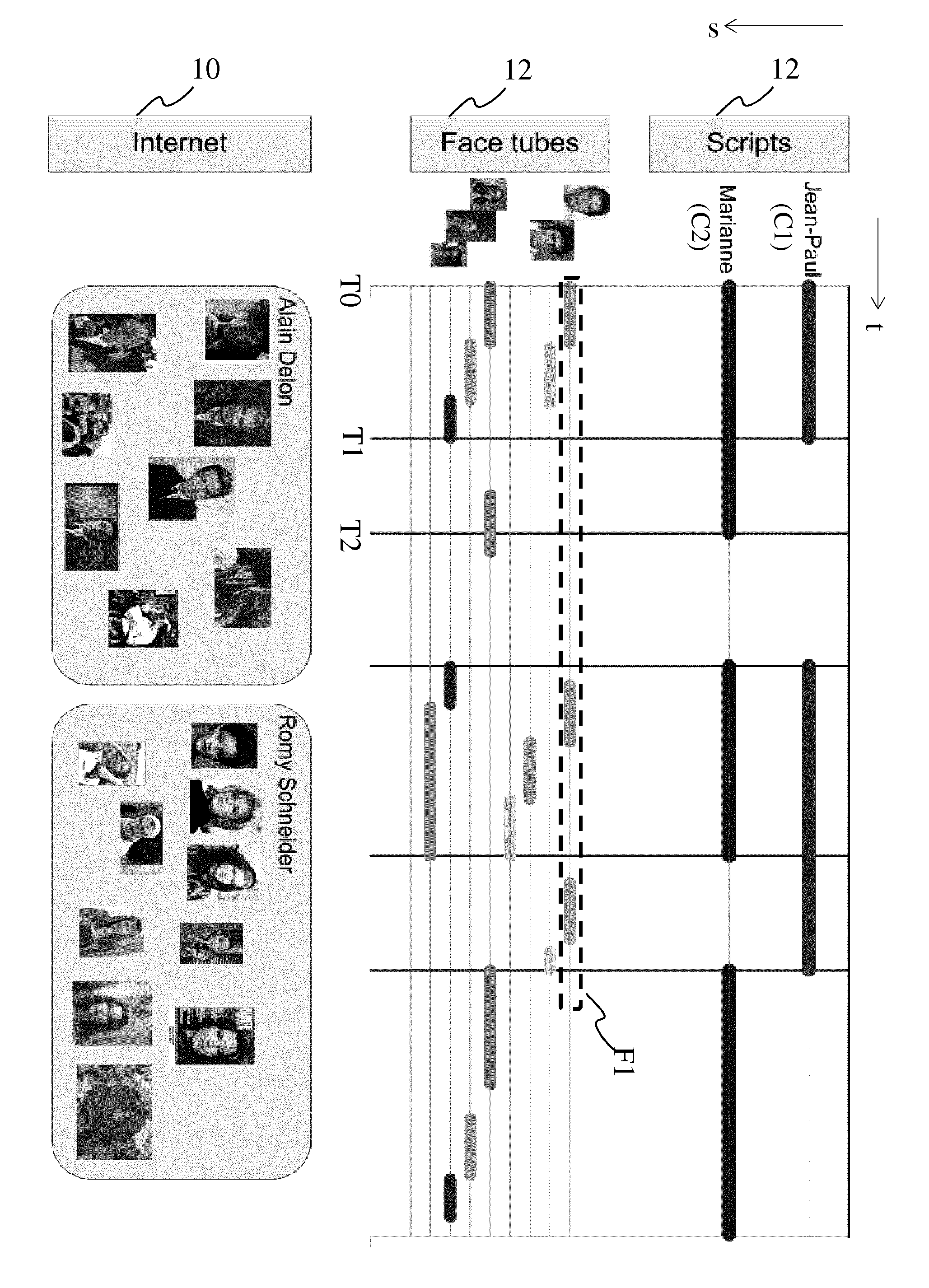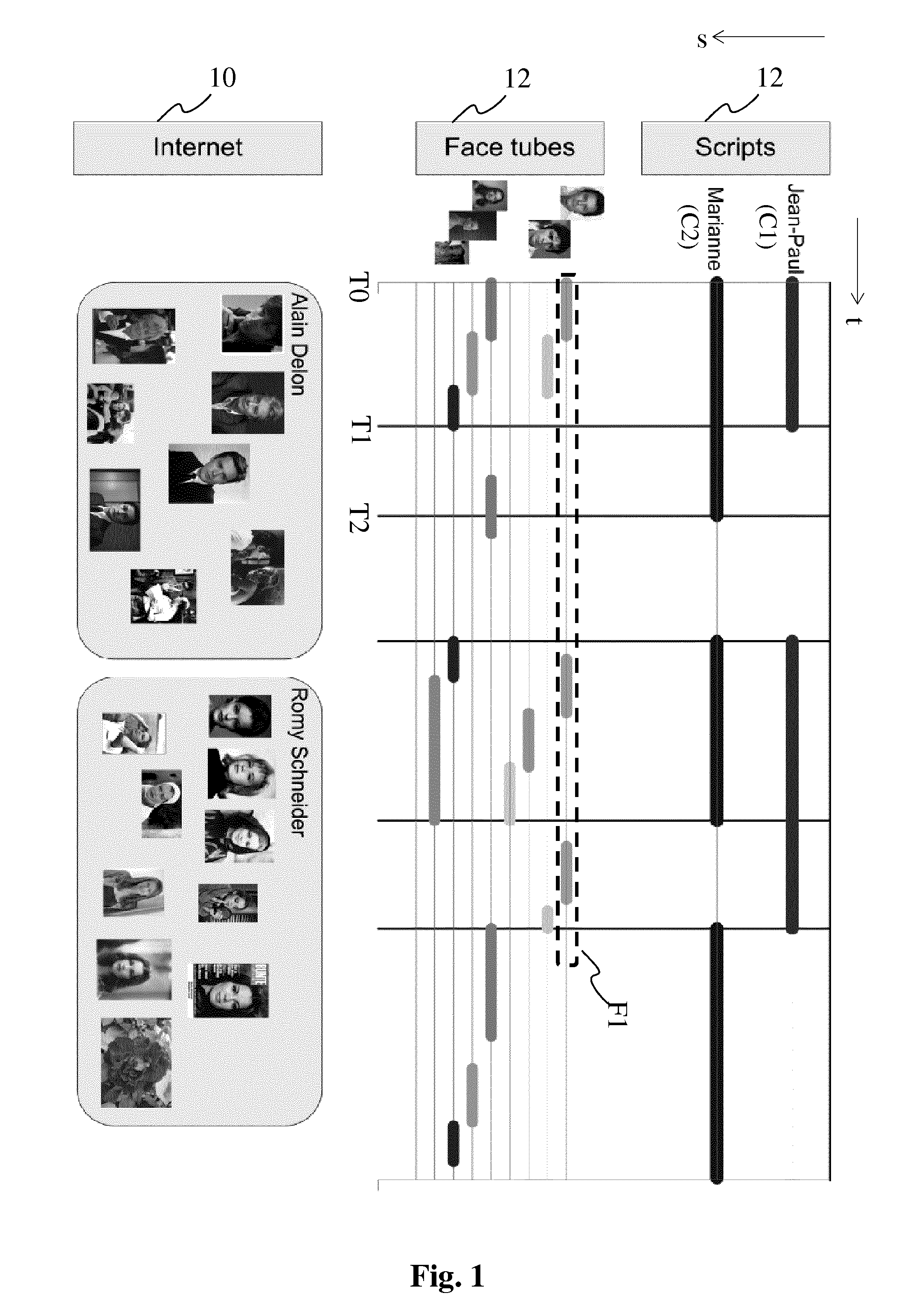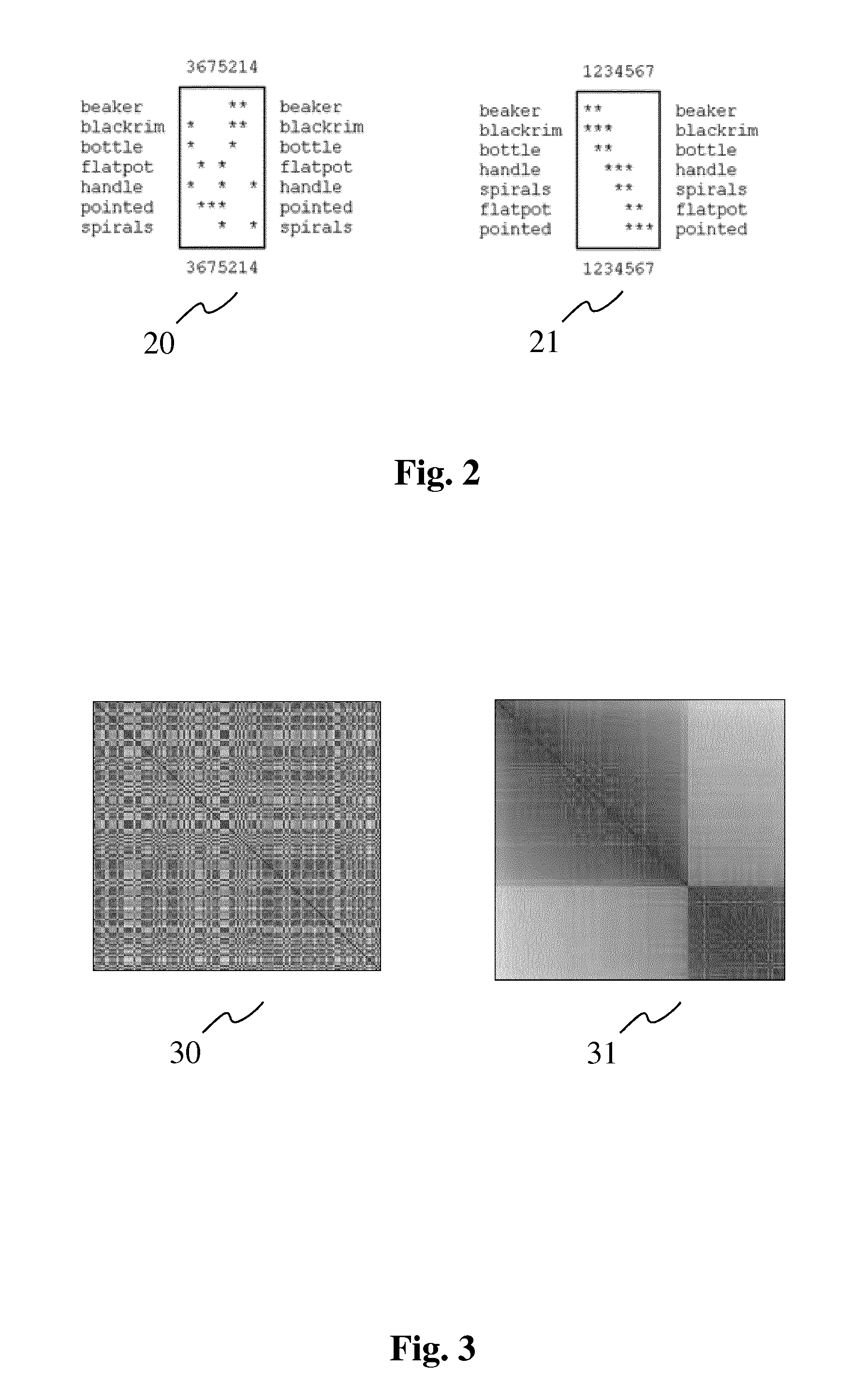Method for identifying objects in an audiovisual document and corresponding device
a technology of audiovisual documents and objects, applied in the field of object recognition, can solve the problems of lagging occasions, lagging occasions, and current methods that do not extend to a large set of modalities or complementary information
- Summary
- Abstract
- Description
- Claims
- Application Information
AI Technical Summary
Benefits of technology
Problems solved by technology
Method used
Image
Examples
Embodiment Construction
[0017]FIG. 1 illustrates the different sources of information and types of information that can be related to an audiovisual document.
[0018]The information is said to be multimodal, that is, being of different modalities, e.g. a face tube F1, an audio tube A1, a character tube C1 in a script. A modality is of a type such as image, text, audio, video, the list not being exhaustive, the modalities being obtained from different sources of information for the multimodal data as shown in the figure: scripts, audio tubes, face tubes and Internet images, the list not being exhaustive. Some of the multimodal data may comprise temporal information that allows to temporally relating the multimodal data to the audiovisual document in which objects are to be identified, such as scripts, audio tubes and face tubes, while others are not temporally related, such as still images from the Internet. In the context of the invention, an audio tube or a face tube is a sequence of audio extracts or faces...
PUM
 Login to View More
Login to View More Abstract
Description
Claims
Application Information
 Login to View More
Login to View More - R&D
- Intellectual Property
- Life Sciences
- Materials
- Tech Scout
- Unparalleled Data Quality
- Higher Quality Content
- 60% Fewer Hallucinations
Browse by: Latest US Patents, China's latest patents, Technical Efficacy Thesaurus, Application Domain, Technology Topic, Popular Technical Reports.
© 2025 PatSnap. All rights reserved.Legal|Privacy policy|Modern Slavery Act Transparency Statement|Sitemap|About US| Contact US: help@patsnap.com



